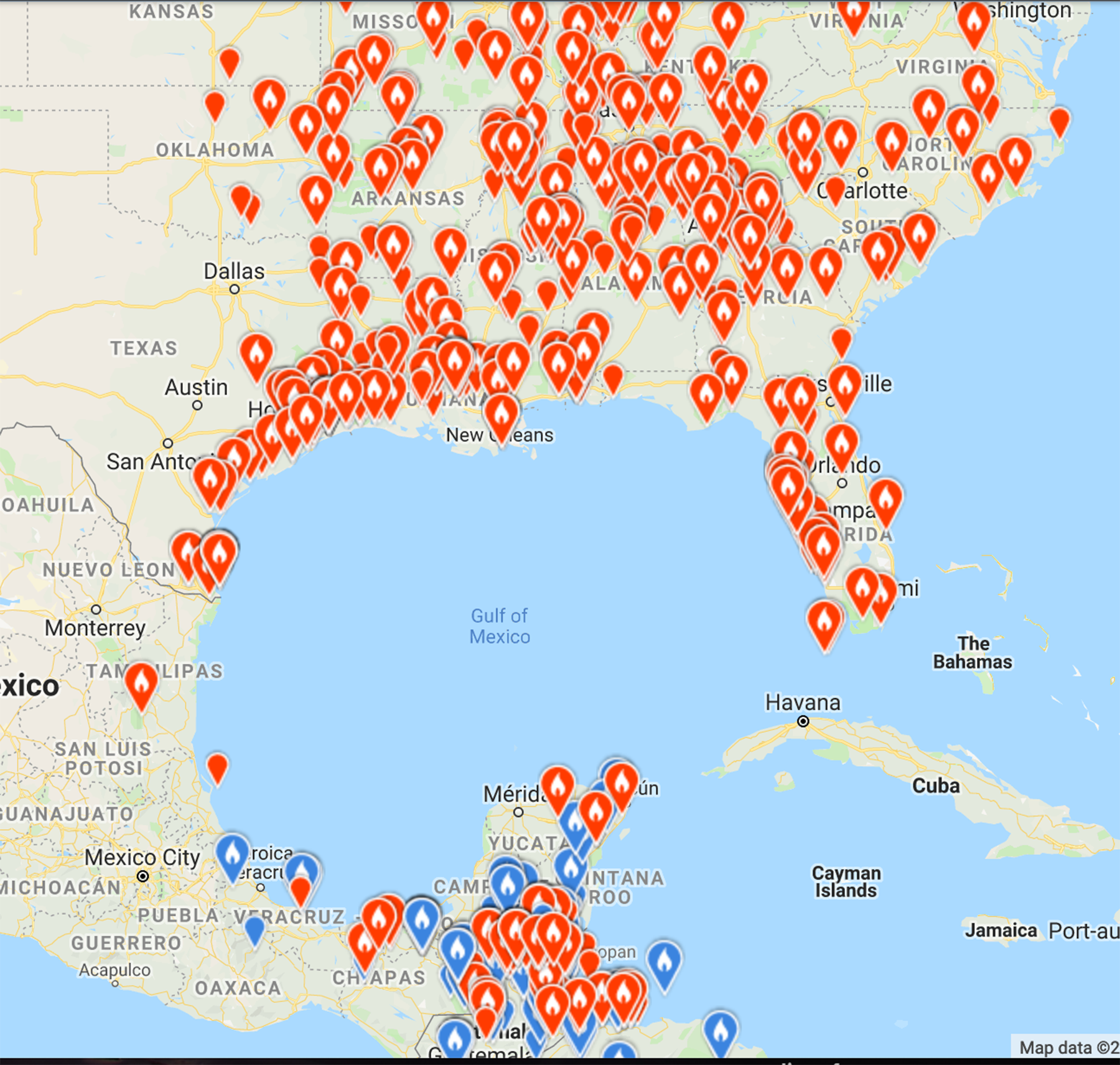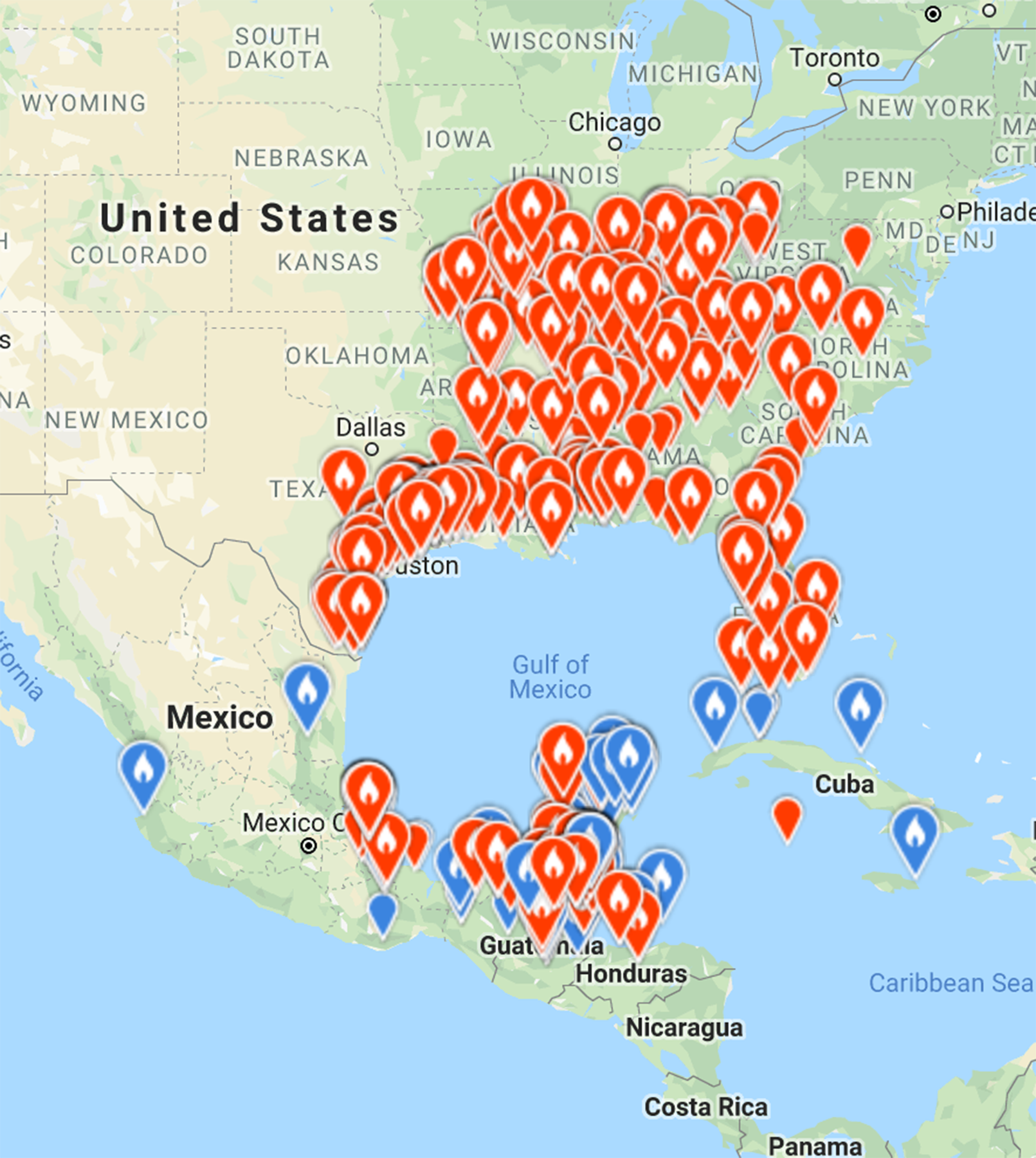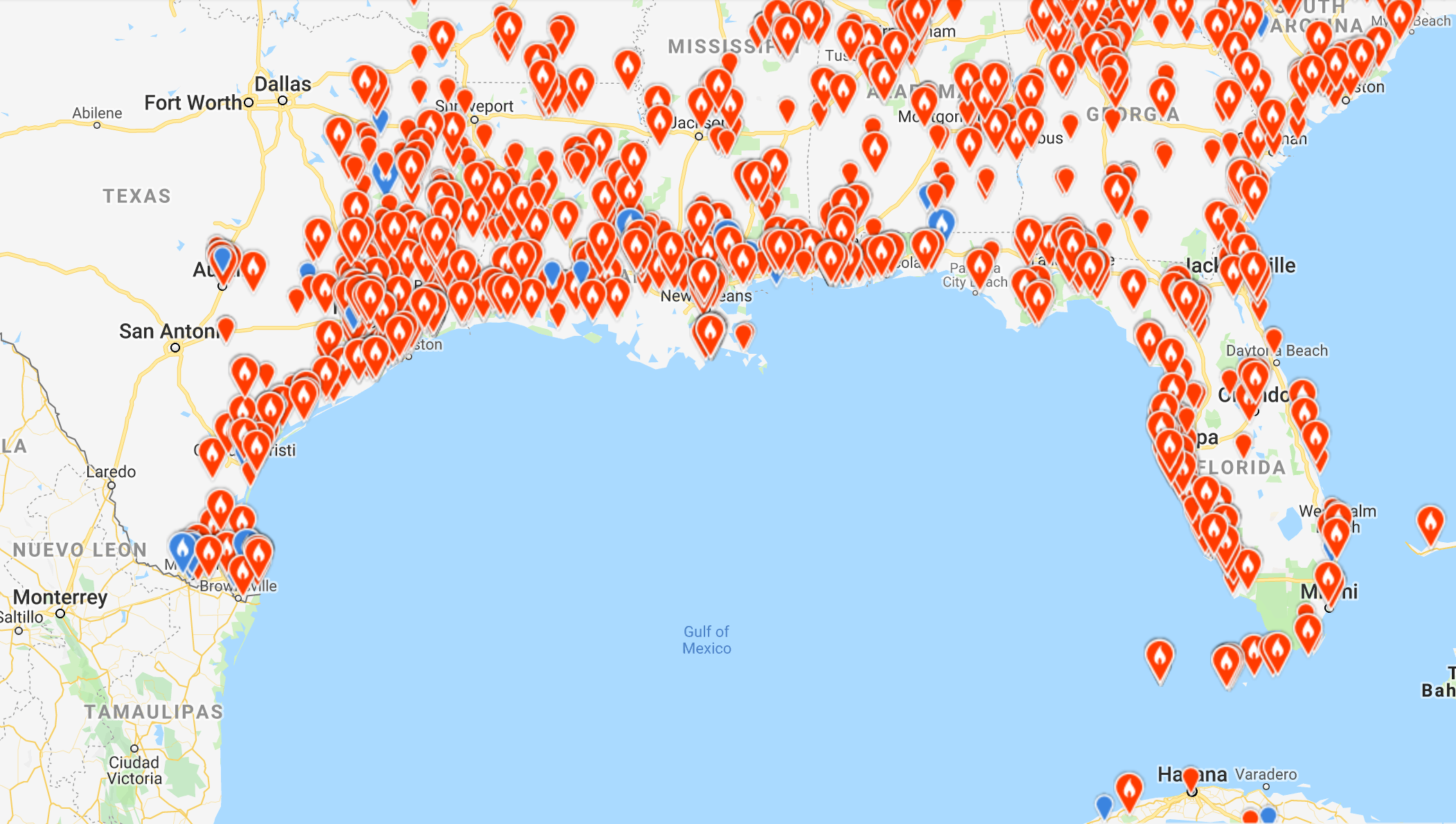I used to think that most, if not all, birds migrated essentially in a straight north-to-south direction, with potential sidetracks due to geographical anomalies such as large bodies of waters, mountain ranges, deserts, etc. That idea was proven to be wrong for me after following up on the sightings of a banded Tundra Swan, which migrates cross-country from Alaska to New Jersey. I’ve also heard of the four great North American flyways (the Atlantic, Central, Mississippi, and Pacific Flyways), which are typically drawn as relatively north-south arrows. As with most things in life, things are not nearly quite so simple.
This spring I grew curious about whether the spring migrants that arrive here in NJ travel via the same broad route, so I investigated eBird sightings for several species. The results were interesting. I saw at least three patterns. The first pattern was exemplified by species such as Nashville, Canada, and Mourning Warbler, that travel through Central America, up through Mexico, and enter the US almost exclusively via Texas and then spread out thereafter.
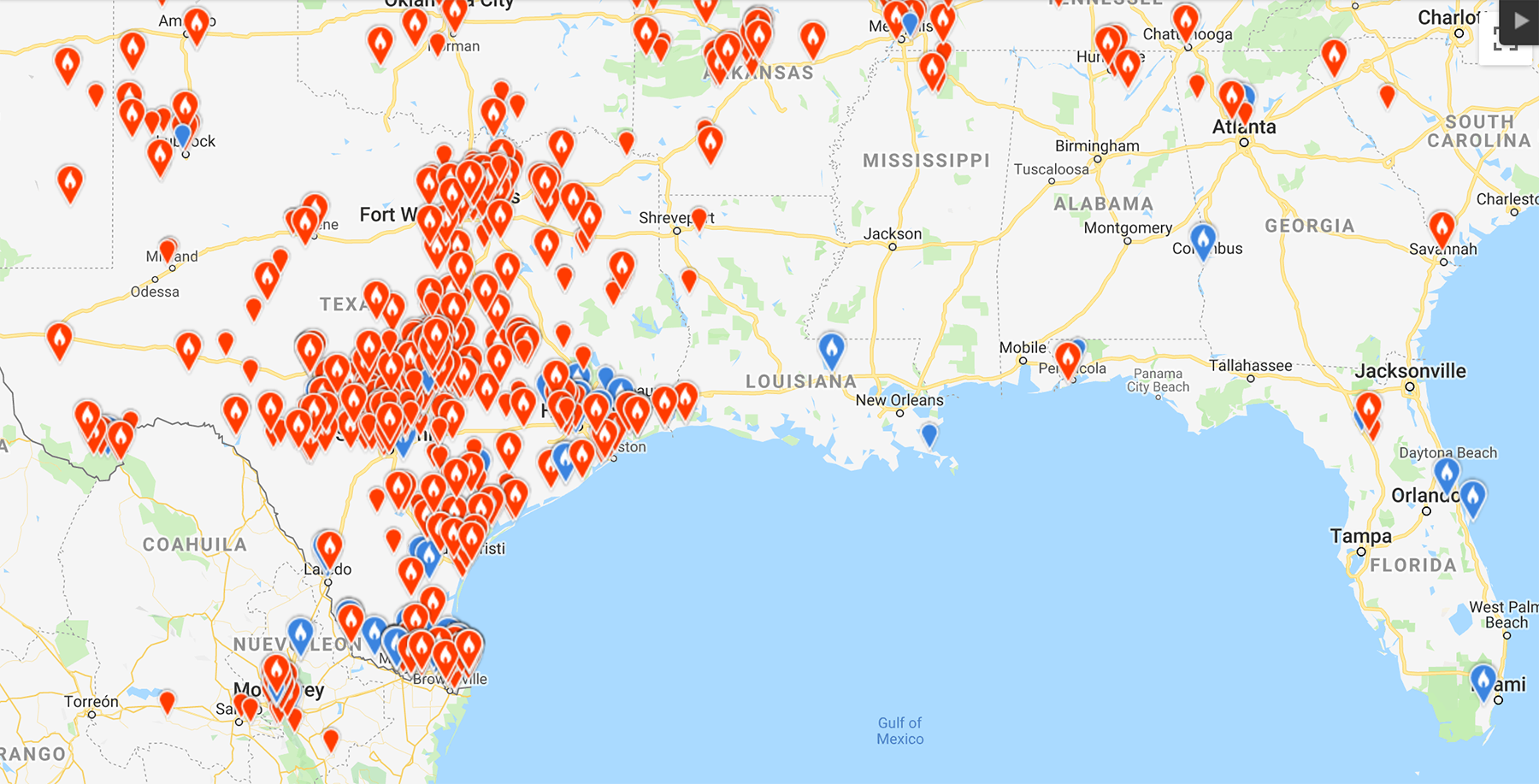
Nashville Warbler in early May appears extensively in Texas, with very few sightings in Florida or the other gulf coast states.
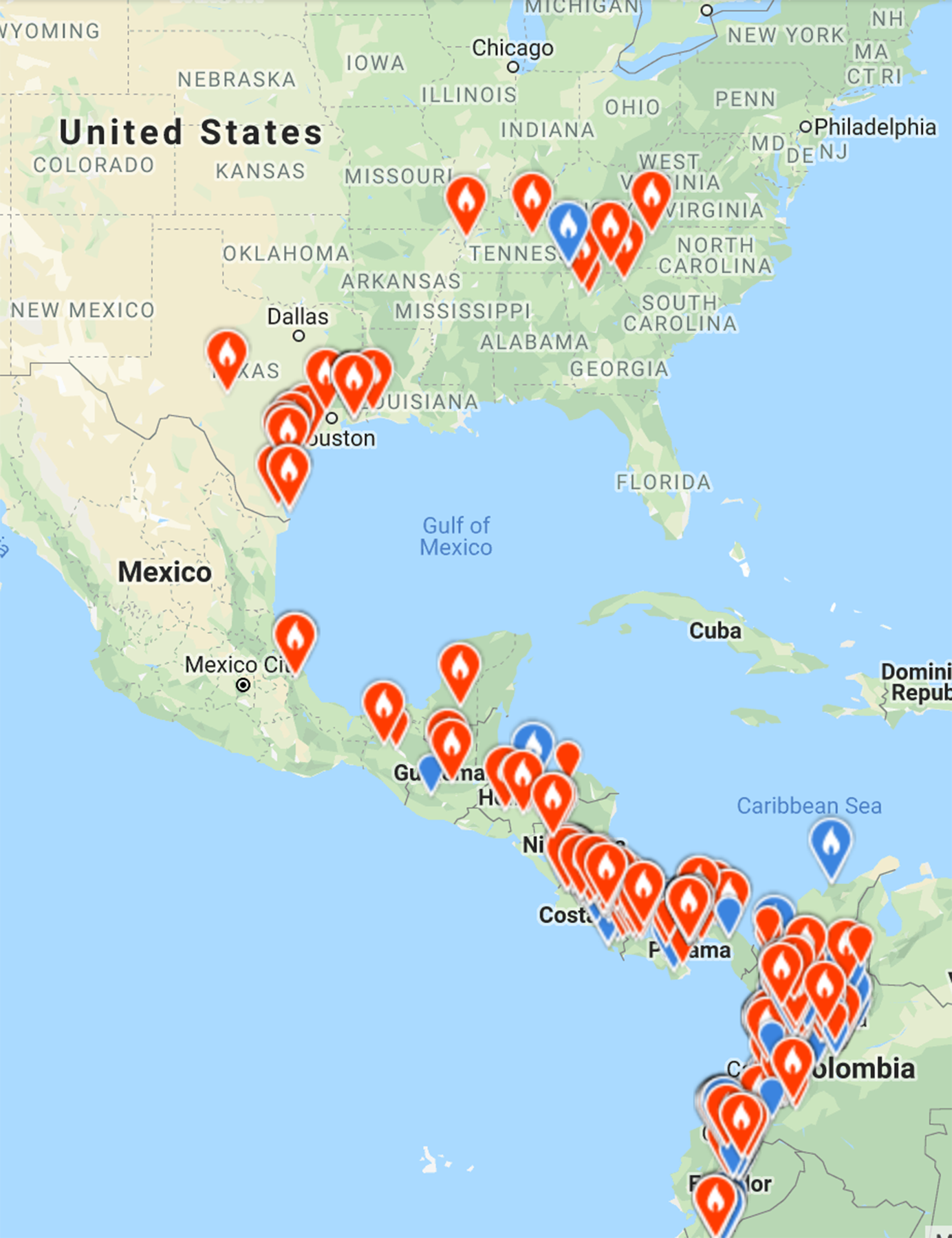
Canada Warbler appears to avoid a trans-gulf migration, coming northward through Central America, through Mexico, and Texas.
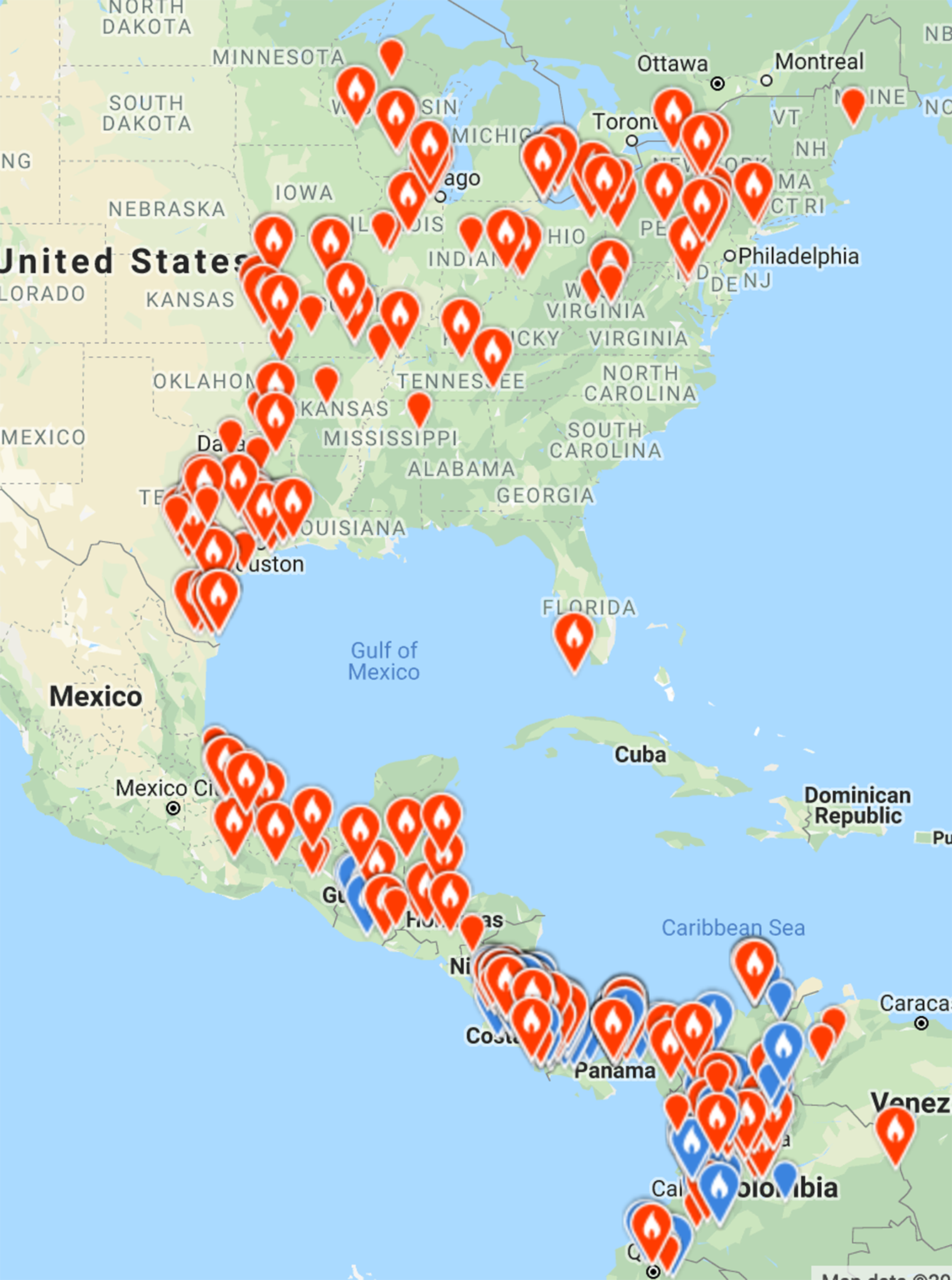
Mourning Warbler is another species that seems to prefer traveling over land, using the Central America-Mexico-Texas route, and then fanning out eastward as it continues its migration.

It’s not just Warblers. Here is the pattern of Olive-sided Flycatcher sightings in early May, again coming up through the central US, although with a separate population then splitting and traveling up the Pacific coast. This bird sure prefers to avoid flying over large bodies of water.
A second pattern was shared by Tennessee, Hooded, Blue-winged, and Kentucky Warbler, which each enter the US through the entire southeastern coast, from Florida through the gulf states and Texas.
A final pattern was best exemplified by Cape May Warbler and American Redstart, which seem to enter the US primarily from the Caribbean islands and then up through Florida into eastern US.
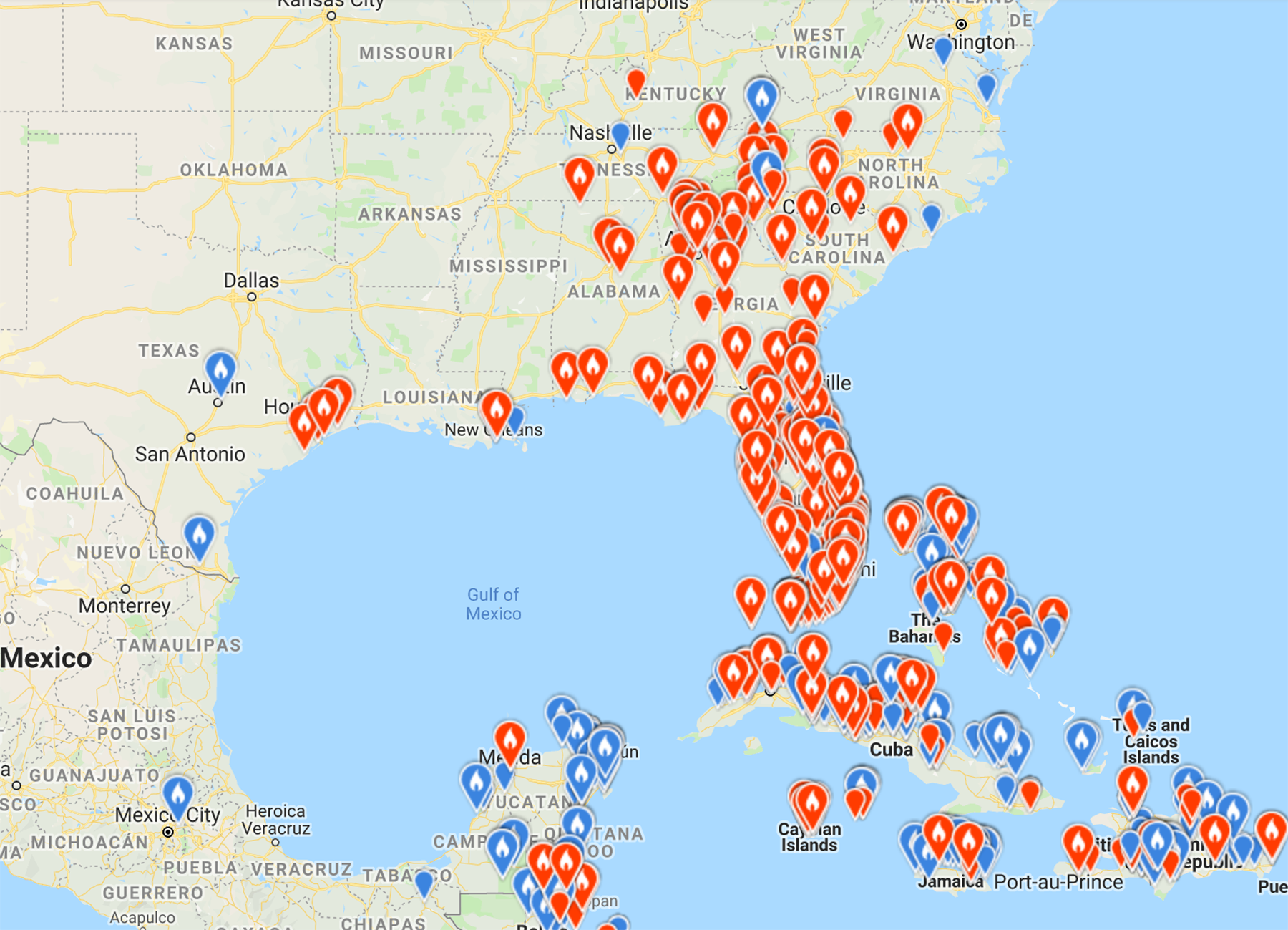
Cape May Warbler comes up primarily through the Caribbean islands through Florida and up the east coast.
So what does this all mean? Well, we should appreciate the variability in how birds arrive or move through our area. Second, it helps to explain why some species are just hard to find, depending on our location and their respective migration route.

